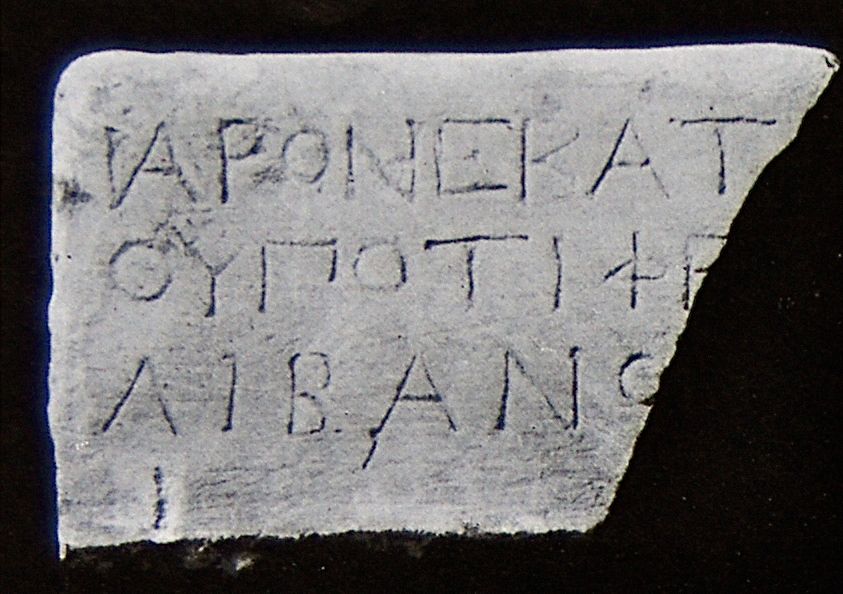EpiDoc XML:
IGCyr1003002
Trismegistos ID:
6188
Source description
Support: Left part of a marble panel (?) (dimensions unknown).
Layout: Inscribed on front face, each line beginning at the left edge.
Letters: Height unknown; no serifs, very small omicron and omega (the latter cut high above the line), upper loop of beta larger than the lower one, phi with flattened loop.
Date: Second half of third or first half of second century BC (lettering).
Findspot: Found before 1937 at Cyrene ➚, East of Greek Theatre.
Place of origin: Cyrene ➚, Sanctuary of Apollo, Temple of Hekate.
Last recorded location: Not found by G. Pugliese Carratelli in 1960. Never seen by IGCyr team.
Text constituted from: Transcription from previous editor (CDL).
Bibliography
Oliverio , III.17, whence Pugliese Carratelli 1961 and SECir, 159 and Sokolowski 1962, p. 220, n. 133, whence SEG, 20.718; IGCyr 100300 ➚; Rosamilia 2023, p. 276, number 21 (text).
Cf. Serafini 2014, pp. 113-114, whence SEG, 64.2016; Harris – Carbon 2015, number 134.
Text
Apparatus
2: ποτιφέ[ρεται] Pugliese Carratelli – Oliverio 1961, SECir, IGCyr: ποτιφέ[ρεις] Rosamilia 2023
3: λίβανo[ς] IGCyr: λίβανo[ν] Rosamilia 2023; λιβανω[τός] Pugliese Carratelli 1961, SECir
French translation
Espace sacré d'Hécate. On n'introduit pas d'encens.
English translation
Sacred area of Hekate. Incense is not brought in.
Italian translation
Area sacra di Ecate. L'incenso non è introdotto.
Commentary
This inscription was published by Pugliese Carratelli from a photograph of the Department Archives, already known to Oliverio, which allows to date the find at the latest in 1937.
The photograph shows very clearly that the last readable letter at line 3 is an omicron rather than an omega, so the foundation word λίβανος should be read instead of the derived form preferred by Pugliese Carratelli.
The word ἱαρόν, means 'sacred area' and may either consist only of the temple or include a larger area around it. The stone was found about this area, apparently not inside it but at some distance further to the West. This apparently small stone could be moved easily.
Rosamilia 2023 stressed that the restored verb at line 2 is longer than the other presumed words at lines 1 and 3. Therefore, he suggested a formulation with the verb at the active voice and the object at the accusative. However, it seems that with a second singular person we should rather have an injunctive formulation with μή. Therefore, we keep the former restoration, which, anyhow, has only one more letter and, with the passive has a more general hint. This inscription had no axial layout.
CC BY-NC-SA 4.0 Deed Attribution-NonCommercial-ShareAlike 4.0 International License.
All citation, reuse or distribution of this work must contain a link back to DOI: https://doi.org/10.60760/unibo/igcyrgvcyr2 and the filename (IGCyr000000 or GVCyr000), as well as the year of consultation.

